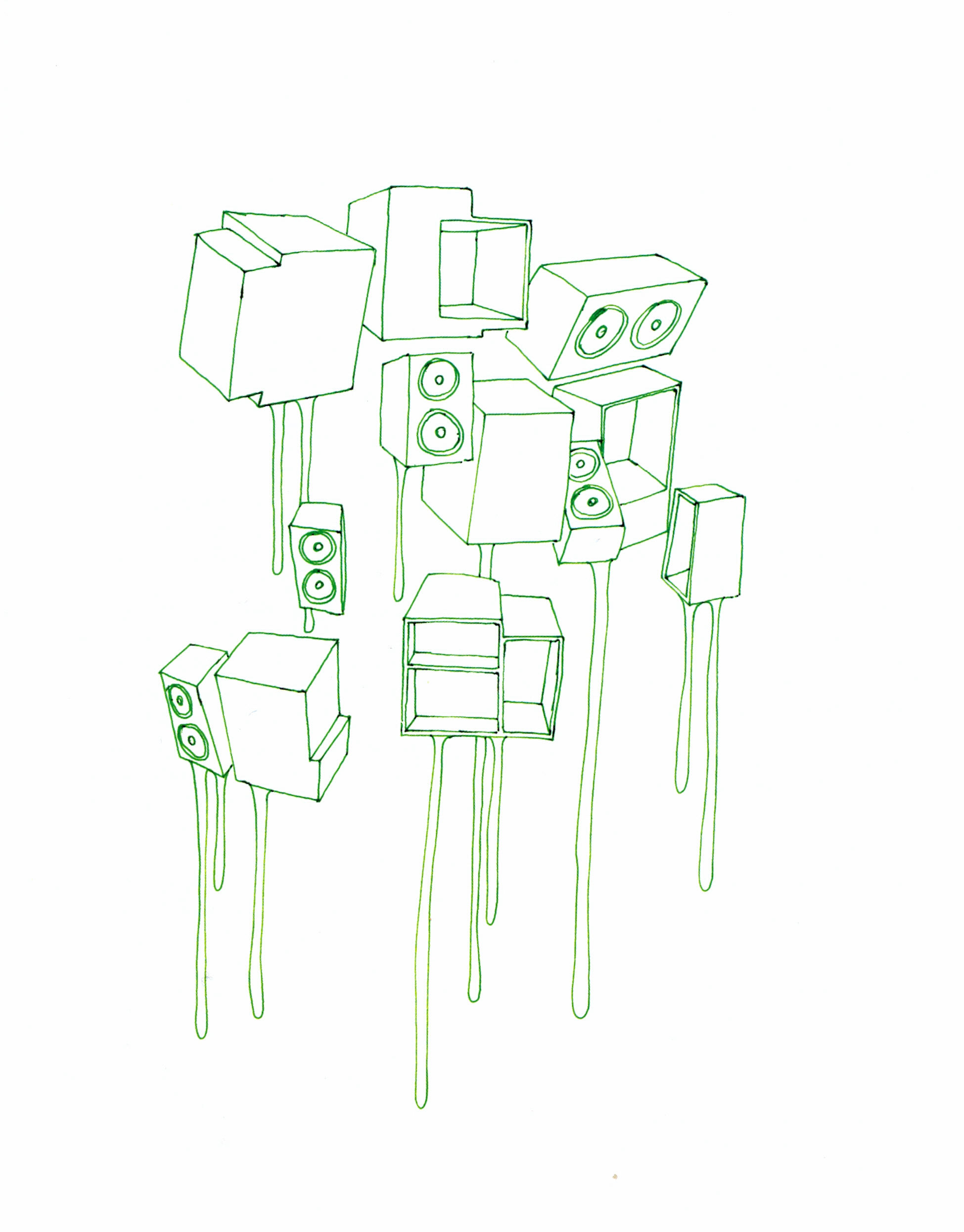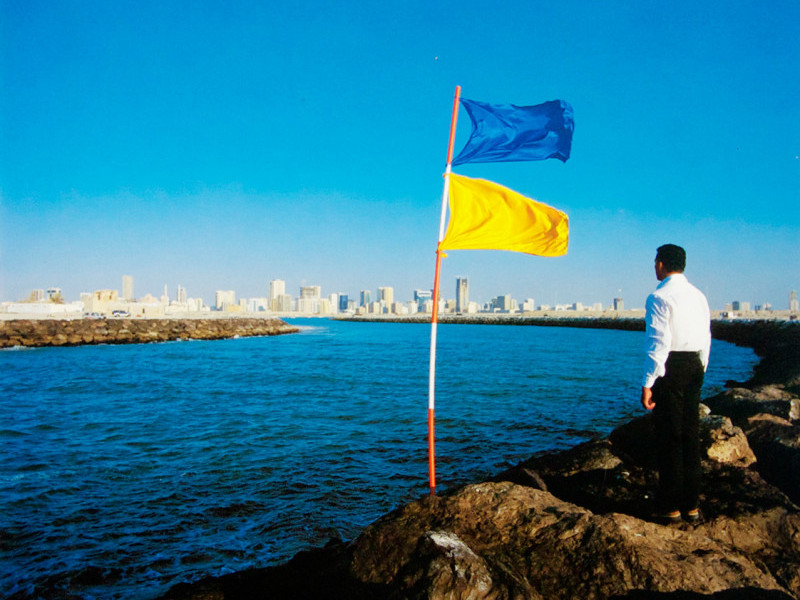
Untitled, 2001
Jasper Sebastian Sturup
Untitled, 2001
Ink on paper
search


Jasper Sebastian Sturup
Untitled, 2001
Ink on paper
Interview: Claus Handberg Christensen talks with Jasper Sebastian Sti.irup.
The pelt of a polar bear divides like a cell and becomes two pelts. Beds hover in the air. Perfect women have no faces, and diamonds bleed. The art of Jasper Sebastian Sti.irup abounds in motives of this kind. Let's take those bleeding diamonds, for example, which recur in several of his works. They can be seen as symbols for the fact that even the most precious and perfect materials are overcome by time, that the decay begins like a stopwatch starting, at the moment when something sees the light of day and takes shape in this world. Maybe the diamonds are not bleeding, maybe they are weeping. I met Jasper in his studio at the culture factory to ask him what is the matter with the diamonds. He answers, smiling, "Someone said once that it may be a good thing to have too much of something. Or you might also say that if you cannot afford to buy diamonds, at least you can draw them."
How would you describe your relationship with drawing?
As I see it, drawing is the most intimate thing you can do. Drawing is something that comes naturally to all people, or rather, came naturally because it's something that everyone has done when they were children; but most leave it behind. Then there are a few people who go on with it, and I'm one of them. What I like about drawing is that there's this direct link between the hand and the paper. When I'm working on sculptures for example, that requires a more roundabout approach. It's a process with many stages, the sculpture must harden before you can go on, and so on. Drawing is more straightforward.
Is it important to you that the delay between idea and expression is snort! Yes, very important. I don't mean that I don't think about expression, what's important is that the idea and the expression are born simultaneously. When the process is that immediate, I have no time to revise the way in which I express the idea, there's no way to change it afterwards. If it isn't good enough, you just discard it.
In the bulk of your pictures, the objects have been torn out of their context. You reduce them to a certain form, but at the same time there's also something personal taking place in them. Where does this process come from?
I think what happens is that we go on constructing the picture in our minds. The bed for example, it's a recurring motif, you know pretty well what's around a bed. You fit your own furniture into the picture so there's the bedside table, there's the mirror hanging on the wall and so on. The things that are there draw the things that are absent. I have made a drawing of three hands and two heads of hair, and even if you don't see the faces, upper bodies, or whatever there is between the hands, you can make them out. There's no need to draw the face because you know yourself perfectly well what that face looks like. In this way I can reduce things to that which is important and still catch all the invisible that surrounds it.
Do you think it's important that there's a distance between the artist and the theorist; That depends. There are works of art that require a great deal of interpretation, and then the act of interpretation becomes a part of the work. I don't think there is any problem with theorising about art, but it's also possible to theorise it to death. Personally, they way I feel is that if my works must be talked about then I prefer that it's other people who do it, and this brings us back to what we were talking about before, I mean, that there must be something in the work of art that neither I nor the viewer can pin down. If I spell everything out, the work becomes nothing but an illustration, and then it ceases to interest me. The work must work also for me. That's also why it's extremely important that art has a space of its own. What I mean is that in a world where everything has been brushed in for everyone to see, made accessible and undemanding, it's important that it's still possible to lose your way, that there's an area that doesn't just surrender itself to you but that is all the time questioning the way.

Sharjah Biennial 6